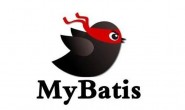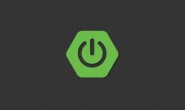点击“终码一生”,关注,置顶公众号
每日技术干货,第一时间送达!
1
让我关注到这一点的起因是一道题:牛客网上的max-points-on-a-line(答题:https://www.nowcoder.com/practice/bfc691e0100441cdb8ec153f32540be2)
题目是这么描述的:
Given n points on a 2D plane, find the maximum number of points that lie on the same straight line.
大意就是给我一些点的X,Y坐标,找到过这些点最多的直线,输出这条线上的点数量。
于是我就敲出了以下的代码:
public class Solution {
public int maxPoints(Point[] points) {
if (points.length <= 2) {
return points.length;
}
int max = 2;
for (int i = 0; i < points.length - 1; i++) {
Map<Float, Integer> map = new HashMap<>(16);
// 记录垂直点数; 当前和Points[i]在一条线上的最大点数; 和Points[i]垂直的点数
int ver = 0, cur, dup = 0;
for (int j = i + 1; j < points.length; j++) {
if (points[j].x == points[i].x) {
if (points[j].y != points[i].y) {
ver++;
} else {
dup++;
}
} else {
float d = (float)((points[j].y - points[i].y) / (double) (points[j].x - points[i].x));
map.put(d, map.get(d) == null ? 1 : map.get(d) + 1);
}
}
cur = ver;
for (int v : map.values()) {
cur = Math.max(v, cur);
}
max = Math.max(max, cur + dup + 1);
}
return max;
}
}这段代码在天真的我看来是没啥问题的,可就是没办法过,经过长久的排查错误,我写了以下代码加在上面的代码里运行,另外,关注公号“终码一生”,回复关键词“资料”,获取视频教程和最新的面试资料!
public static void main(String[] args) {
int[][] vals = {{2,3},{3,3},{-5,3}};
Point[] points = new Point[3];
for (int i=0; i<vals.length; i++){
points[i] = new Point(vals[i][0], vals[i][1]);
}
Solution solution = new Solution();
System.out.println(solution.maxPoints(points));
}它输出的,竟然是2
也就是说,它认为(3-3) / (3-2) 和 (3-3) / (-5-2) 不同? 什么鬼…
经过debug,发现上述结果分别是0.0和-0.0
0.0 难道不等于 -0.0 ?
这时我心里已经一阵卧槽了,不过我还是写了验证代码:
System.out.println(0.0 == -0.0);结果是True,没问题啊,我凌乱了……
一定是java底层代码错了! 我没错……
又是一阵debug,我找到了这条语句:
map.put(d, map.get(d) == null ? 1 : map.get(d) + 1);我觉得map.get()很有问题, 它的源代码是这样的:
public V get(Object key) {
Node<K,V> e;
return (e = getNode(hash(key), key)) == null ? null : e.value;
}唔,先获得hash()是吧,那我找到了它的hash函数:
static final int hash(Object key) {
int h;
return (key == null) ? 0 : (h = key.hashCode()) ^ (h >>> 16);
}再来,这里是要比较h 和key的hashCode是吧,那我们去看hashCode()函数
public native int hashCode();这是一个本地方法,看不到源码了,那我就使用它看看吧,测试一下不就好了吗,我写了以下的测试代码:
public static void main(String[] args) {
System.out.println(0.0 == -0.0);
System.out.println(new Float(0.0).hashCode() ==
new Float(-0.0).hashCode());
}结果竟然是True和False !!!
这个源头终于找到了, 0.0 和 -0.0 的hashCode值是不同的 !
经过一番修改,我通过了这道题(其实精度也会有问题,应该使用BigDecimal的,不过牛客网要求没那么高。后来我想了想只有把直线方程写成Ax+By+C=0的形式才能完全避免精度问题),另外,关注公号“终码一生”,回复关键词“资料”,获取视频教程和最新的面试资料!
接下来,探讨下实数的hashCode()函数是个啥情况!
2
-
在程序执行期间,只要equals方法的比较操作用到的信息没有被修改,那么对这同一个对象调用多次,hashCode方法必须始终如一地返回同一个整数。
-
如果两个对象根据equals方法比较是相等的,那么调用两个对象的hashCode方法必须返回相同的整数结果。
-
如果两个对象根据equals方法比较是不等的,则hashCode方法不一定得返回不同的整数。
——《effective java》
那么我们来看看,0.0和-0.0调用equals方法是否相等:
System.out.println(new Float(0.0).equals(0.0f));
System.out.println(new Float(0.0).equals((float) -0.0));输出是True 和 False
好吧,二者调用equals() 方法不相等,看来是满足了书里说的逻辑的。
那我们看看Float底层equals函数咋写的:
public boolean equals(Object obj) {
return (obj instanceof Float)
&& (floatToIntBits(((Float)obj).value) ==
floatToIntBits(value));
}哦,原来是把Float转换成Bits的时候发生了点奇妙的事,于是我找到了一切的源头:
/**
* Returns a representation of the specified floating-point value
* according to the IEEE 754 floating-point "single format" bit
* layout.
*
* <p>Bit 31 (the bit that is selected by the mask
* {@code 0x80000000}) represents the sign of the floating-point
* number.
* Bits 30-23 (the bits that are selected by the mask
* {@code 0x7f800000}) represent the exponent.
* Bits 22-0 (the bits that are selected by the mask
* {@code 0x007fffff}) represent the significand (sometimes called
* the mantissa) of the floating-point number.
*
* <p>If the argument is positive infinity, the result is
* {@code 0x7f800000}.
*
* <p>If the argument is negative infinity, the result is
* {@code 0xff800000}.
*
* <p>If the argument is NaN, the result is {@code 0x7fc00000}.
*
* <p>In all cases, the result is an integer that, when given to the
* {@link #intBitsToFloat(int)} method, will produce a floating-point
* value the same as the argument to {@code floatToIntBits}
* (except all NaN values are collapsed to a single
* "canonical" NaN value).
*
* @param value a floating-point number.
* @return the bits that represent the floating-point number.
*/
public static int floatToIntBits(float value) {
int result = floatToRawIntBits(value);
// Check for NaN based on values of bit fields, maximum
// exponent and nonzero significand.
if (((result & FloatConsts.EXP_BIT_MASK) ==
FloatConsts.EXP_BIT_MASK) &&
(result & FloatConsts.SIGNIF_BIT_MASK) != 0)
result = 0x7fc00000;
return result;
}这文档挺长的,也查了其它资料,看了半天终于搞懂了
就是说Java浮点数的语义一般遵循IEEE 754二进制浮点算术标准。IEEE 754标准提供了浮点无穷,负无穷,负零和NaN(非数字)的定义。在使用Java过程中,一些特殊的浮点数通常会让大家很迷惑
里面提到,当浮点运算产生一个非常接近0的负浮点数时,会产生“-0.0”,而这个浮点数不能正常表示
我们可以输出一波0.0和-0.0的数据:
System.out.println(Float.floatToIntBits((float) 0.0));
System.out.println(Float.floatToIntBits((float) -0.0));
System.out.println(Float.floatToRawIntBits(0.0f));
System.out.println(Float.floatToRawIntBits((float)-0.0));
结果:
0
-2147483648
0
-2147483648就是说,存储-0.0, 竟然用的是0x80000000
这也是我们熟悉的Integer.MIN_VALUE
来源:blog.csdn.net/qq_30219017/article/details/79689492
往期推荐









